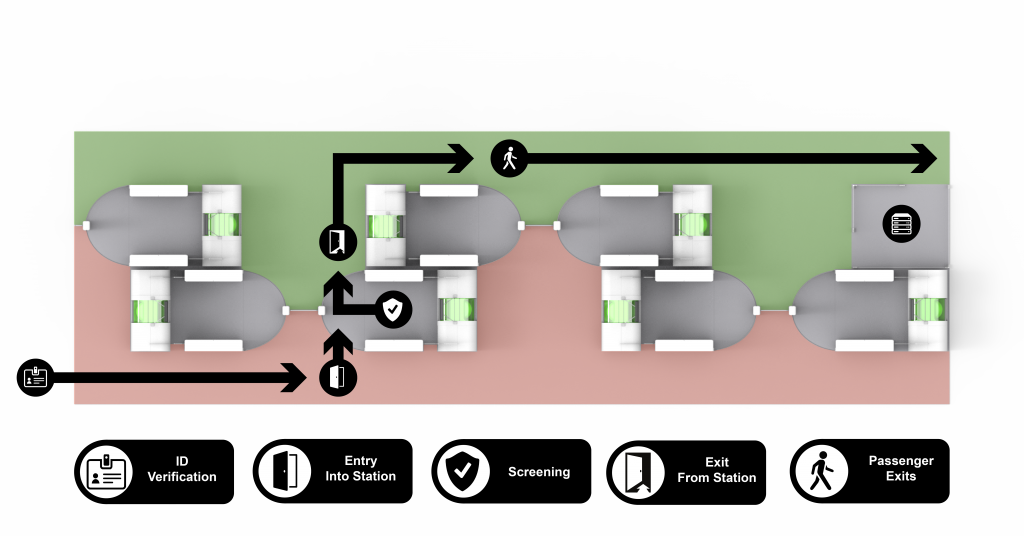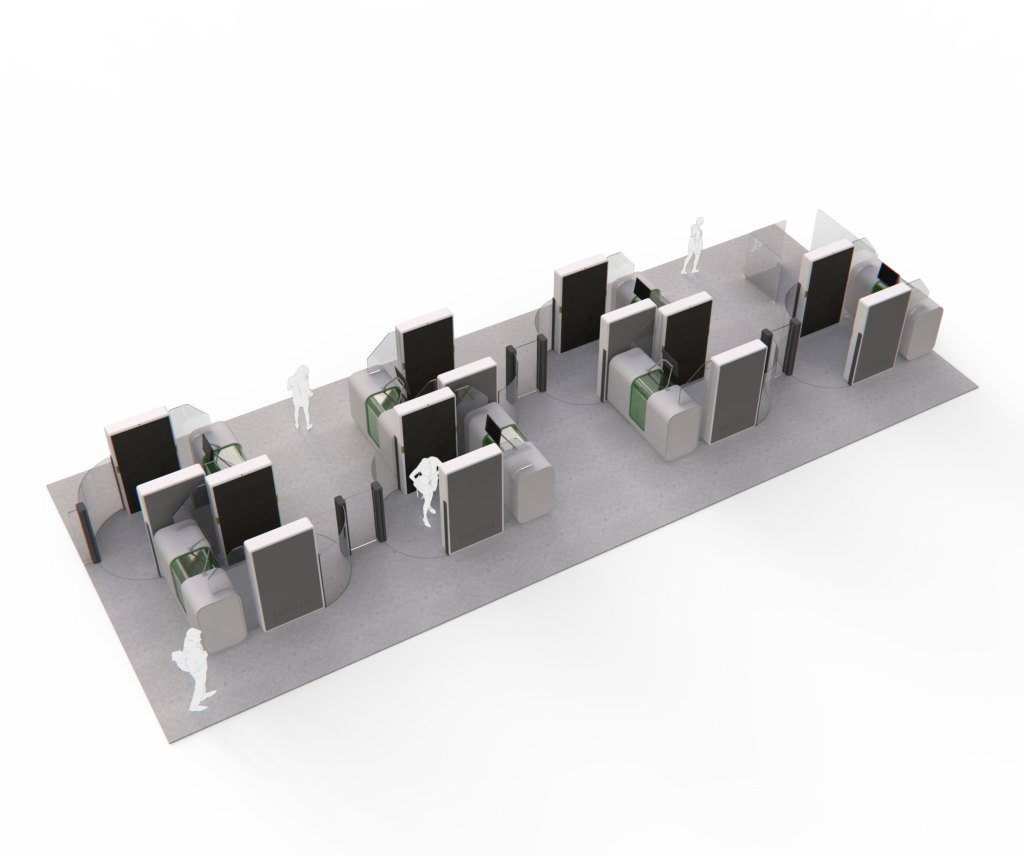Micro-X has been invited to present its checkpoint security solution, which it is developing in a US Department of Homeland Security (DHS) Scientist and Technology Directorate (S&T) funded program, to airport security regulators and security managers in Europe this week and in July.
These are the first presentations of Micro-X’s concept design for a passenger self-service checkpoint to planners and key decision makers in the worldwide airport security community. The checkpoint station design incorporates Micro-X’s new miniature CT baggage scanner which is also under a funded development.

Figure 1: Passenger flow through the multiple next-gen checkpoint stations will be increased.
Micro-X General Manager for Checkpoints Dr Brian Gonzales said engaging with the broader airport security community was key to the company’s positioning as a technology leader in this field. Micro-X’s strategy is to become the leading international vendor for checkpoint baggage screening.
“Micro-X’s technology leadership is based on our unique position as the only company in the world with NEX technology. By presenting what this product will look like for passengers and security services, we are showing the world what can be achieved with this technology, simultaneously improving the passenger experience and security detection,” said Dr Gonzales.
Dr Gonzales added “As aviation starts to return to pre-pandemic levels, we are seeing at airports around the world huge delays and line-ups as airports struggle with checkpoint staffing. Micro-X’s self-service checkpoint station addresses the problem through its small size and modular design for self-screening which increases passenger throughput and improve staffing efficiency.”

Figure 2: Micro-X’s passenger self-screening checkpoint design can fit seven modular stations, each with their own miniaturised CT, in the same footprint as a conventional conveyor-belt x-ray lane.
In the US, the TSA is deploying new computed tomography (CT) x-ray imagers on conveyor-belt systems to address the growing challenges facing airport baggage scanning. These new scanners offer three dimensional images that allow automated detection algorithms to be used. However, this technology brings a new challenge of false alarms, which in a traditional, conveyor-based system can slow the flow of bags because every alarm must be resolved by manual inspection. These new CT systems have several integration challenges for airports because of their size, weight, power requirements and need for a complex automated tray return system.
The solution Micro-X is developing extends the self-service concept common in passport immigration control, adding luggage and body scanning in the same station. Micro-X’s compact design can place seven self-service stations in the same footprint of a single conventional x-ray conveyer belt with the advantage that if even if manual resolution at one station is required, other stations continue processing. Micro-X’s self-service design has the potential bring full automation to the checkpoint screening process, resulting in both significant improvements to throughput and security. The self-screening offers the additional benefit of passengers not being separated from their valuables and being screened in private.
